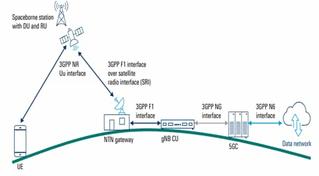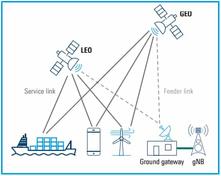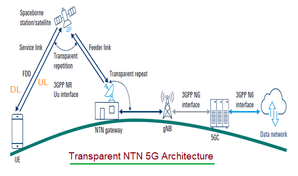Difference between Doppler Shift vs Doppler Rate
Advertisement
Both of these parameters are key concept in 5G Non-Terrestrial Networks (NTN), since the relative motion between satellites and user equipment (UE) causes significant frequency variations.
Doppler Shift
- Definition : The Doppler Shift is the change in the frequency of a signal received by the UE or satellite due to their relative motion.
- It is mainly caused by high orbital velocity of satellites and movement of user equipment (e.g. car, ship or aircraft).
- It causes frequency offset & phase rotation in the received signal. This impairment is corrected by frequency correction and tracking algorithms in 5G NTN receiver front end.
- Formula :
Where, fd = doppler shift (Hz), v = relative velocity between transmitter and receiver (m/s), c = speed of light, Fc = carrier frequency (Hz) and θ = angle between direction of motion and line of sight.
Doppler Rate
- Definition : It is the rate of change of the Doppler shift over time. It is also known by doppler shift rate.
- It represents how quickly the frequency offset changes as the satellite moves across the sky.
- It affects frequency tracking loops, timing recovery and channel estimation in the receiver.
- To correct for this impairment, the receiver must continuously track and compensate for this changing Doppler shift to maintain signal synchronization.
- Formula :
Key differences
| Aspect | Doppler Shift | Doppler Rate |
|---|---|---|
| Definition | Instantaneous frequency offset due to relative motion | Rate of change of Doppler shift over time |
| Unit | Hz | Hz/s |
| Impact on 5G NTN | Causes frequency offset and inter-carrier interference | Causes time varying channel effects, difficult synchronization |
| Typical values | Up to +/- 40 to 50 KHz | Up to hundreds of Hz/s |
| Mitigation techniques | Frequency offset estimation and compensation | Adaptive tracking, predictive Doppler correction |
Summary: Doppler shift is the frequency change at a moment in time; Doppler rate is how fast that frequency change is itself changing. In 5G NTN, both must be accurately estimated and compensated for reliable communication, especially for LEO satellites with rapid motion.
Advertisement
 RF
RF

